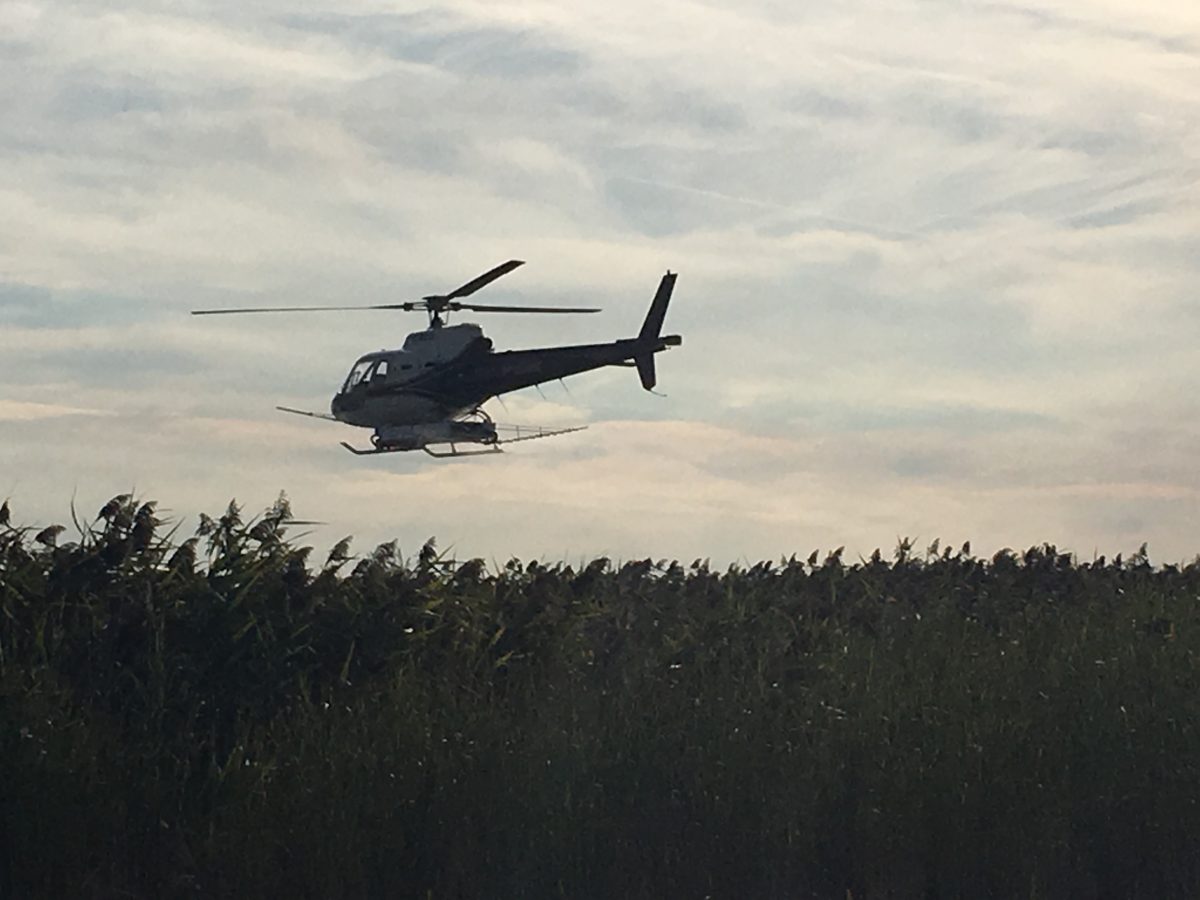Fighting back against invasive Phragmites
Pilot program is gaining ground in the battle against an alien giant.

Eric Giles works from the crow’s nest of his Marsh Master wetland buggy at heights of up to 20 feet off the ground. He needs the elevation to reach the top of invasive Phragmites plants. His driver below can’t see a thing.
“We have to wear headsets to communicate, so I can tell him where to drive,” says Giles.
Giles is spraying herbicide at a southern Ontario wetland. It’s part of a pilot program to control invasive Phragmites (Phragmites australis) at Long Point and Rondeau Park. His machine, sporting a “Phrag’n Slayer” logo, is one of the few things that can get through the thick mass of plants—which he’s seen grow up to 22 feet tall.
“A 7,000-pound machine has a hard time getting through this stuff. Now think of yourself as a Blanding’s turtle,” says Giles. “Phrag is so destructive, and we could lose those wild things.”

Eric Giles/Giles Restoration Services
Invasive Phragmites is an aggressive, alien plant species that grows much larger than its native counterpart. It chokes out other plants and the wetland ecosystems that support wildlife.
“Invasive Phragmites outcompetes most native vegetation and forms dense colonies, not allowing anything else to grow,” says Erling Armson, DUC’s head of land securement, invasive and northern programs.
“This reduces biodiversity and the amount of open water. It also negatively impacts wetland species, including approximately 20 per cent of Ontario’s species at risk.”
In 2005, scientists at Agriculture and Agri-Food Canada recognized invasive Phragmites as the country’s worst invasive plant. It is well established in southwestern Ontario and eastern Ontario near the Quebec border. It is also spreading into northern Ontario’s boreal region. Under the right conditions, it can spread up to 30 per cent per year.
There’s no easy solution for Ontario’s invasive Phragmites problem. But a multi-faceted strategy is gaining ground, thanks to extensive research and partnership efforts.
At Long Point and Rondeau Provincial Park, DUC mapped the plant and teamed up with the Ministry of Natural Resources and Forestry, Nature Conservancy of Canada and special interest groups. Together they created the herbicide pilot program and obtained an Emergency Use Registration permit to fight back large stands of Phragmites. More than 3,700 acres (1,500 hectares) have been safely treated this way so far.
In the winter months, the dead Phragmites are rolled and/or cut. Some areas may also be burned. This allows the native wetland plants to regenerate more easily, and helps the wetland return to a more diverse and healthy ecosystem.
According to Armson, the strategy is working.
“An intensive monitoring and evaluation component—led by the University of Waterloo—clearly shows that the herbicide has been effective at killing Phragmites without any significant impacts on water quality or other wildlife,” says Armson.

NCC
Early battles may be won at Long Point and Rondeau Park, but Ontario isn’t the only place where invasive Phragmites has crept in. It’s now been reported in all three Prairie Provinces.
“In Manitoba and Saskatchewan, it is still reported as patchy and uncommon,” says Dale Wrubleski, senior scientist with DUC’s Institute for Wetlands and Waterfowl Research. “However, in Alberta, a recent publication found that the invasive subspecies may be more common than the native subspecies.”
For now, researchers like Wrubleski are observing the plant and its locations in the West. If a battle must be waged against invasive Phragmites on the Prairies, it can be informed by the successful strategies developed in Ontario.
“Phrag is a challenge to get rid of,” says Giles. “But we’ve seen 80 to 90 per cent success with just one application of herbicide—at the proper time, using the right equipment. It can be very successful.”



